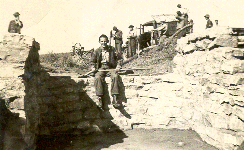|
The Civilian Conservation Corps (CCC) was created by the Emergency Conservation Work Act in 1933. The goal was to employ 250,000 young men between the ages of 18 and 25. In 1933, 13,600,000 people were unemployed in the United States. When the end of the CCC came, over 2 million young men had participated in the work program. The CCC was run by many government programs. The Army would run the camps while the Department of Interior and Agriculture would be responsible for work projects and provide the personnel to manage them. The Budget Director would provide the financial assistance, and the solicitor and judge advocate would offer legal advice. Rather than establishing a new bureaucracy, the president established this program within existing governmental departments. During the time of the CCC, many accomplishments were made. Some 2.5 billion trees were planted, 248,000 acres of swamp drained, 814,000 acres of grazing land replanted, and 972 million fish restocked. The CCC also protected 154 million square yards of banks from erosion as well as 40 million acres of farmland. The CCC boys built 125,000 miles of road and 13,100 miles of trails, strung 89,000 miles of telephone line, built 52,000 acres of campgrounds, 800 state parks made and nearly 4,000 Historic Buildings renovated. In all the projects directly employed or benefited over 17 million people, created some two billion 1942 dollars of infrastructure and provided 7.1 million days of environmental conservation labor. |

